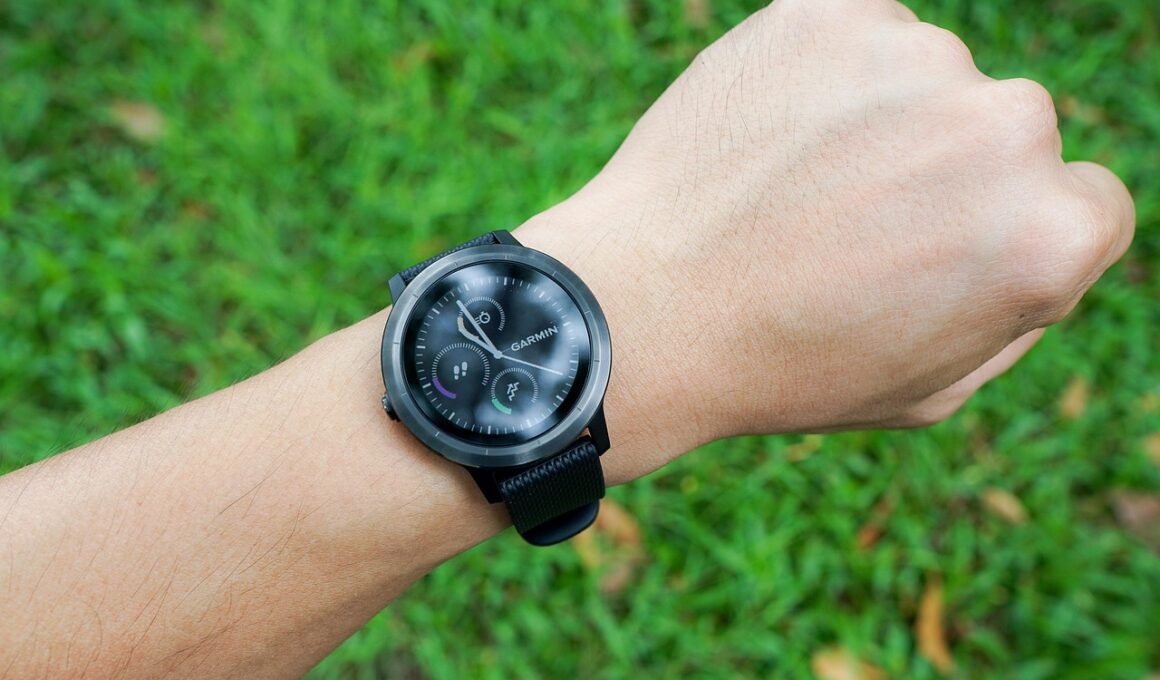Using Wearable Technology to Track Volleyball Training Progress
In recent years, the integration of wearable technology into athletic training has revolutionized the way athletes monitor their performance. Professional volleyball training has benefited immensely from these advancements, enabling coaches and players to collect precise data during practice sessions. This technology provides a detailed analysis of various performance metrics such as heart rate, movement patterns, and even technique improvements. Not only does this facilitate actionable insights for coaches, but it also empowers players to take charge of their own training. Wearable devices, including smartwatches and specialized sensors, allow athletes to track their progress over time. This data-driven approach leads to improved training regimens that can be tailored to each player’s unique needs. With accurate tracking of repetitions and skill execution, athletes can identify areas needing enhancement. Moreover, coaches can make well-informed decisions regarding training schedules and rest periods. Consequently, the incorporation of these tools has resulted in higher levels of engagement and motivation among players. Overall, it’s evident that wearable technology plays a crucial role in optimizing training and enhancing performance in professional volleyball.
In addition to performance metrics, wearable technology also captures physiological data. This information is invaluable in volleyball training, as it allows trainers to analyze how players’ bodies respond to various drills and match conditions. For example, understanding fatigue levels through heart rate monitoring can help coaches make informed decisions about when to increase training intensity or implement recovery strategies. Players can benefit from personalized adjustments based on their individual responses to workouts, ensuring optimal conditioning without the risk of injury. Furthermore, investments in wearable technology have been shown to enhance injury prevention techniques by providing insights into potential risk factors. By monitoring biomechanics, coaches can spot movement inefficiencies or excessive strain during training sessions. This proactive approach aids in modifying training styles and routines to mitigate risks. Given the competitiveness of professional volleyball, ensuring players’ health is paramount for teams aiming for success. Players equipped with this technology can also take accountability for their training efforts, leading to a stronger team environment. Consequently, the amalgamation of technology and training continues to redefine professional volleyball practices and its strategic approaches.
Benefits of Data-Driven Training
Employing wearable technology in volleyball training fosters a data-driven coaching environment. Data visualization tools simplify performance analysis for coaches, allowing them to easily digest complex statistics about their players. For example, graphics can showcase a player’s jump height, speed, and even their recovery time. This aids in strategic planning when it comes to selecting players for both training and matches. It ensures that athletes who are in optimal condition are the ones taking to the court. Moreover, this data also provides essential benchmarking. Coaches can utilize historical performance data, comparing players’ current metrics with past results. Such analyses reveal trends that could identify long-term improvements or degradation in performance. As a result, athletes are motivated to consistently outperform their previous records. Utilizing this kind of objective data helps teams refine their strategies for not only training but also game execution. Coaches can analyze how well strategies worked in real-time by correlating data from practice with game results. This leads to adaptive changes that maximize team performance and address weaknesses promptly throughout the season.
The psychological impact of using wearable technology in training should not be underestimated. Athletes who can visually track their progress tend to exhibit higher levels of motivation and confidence. Knowing how they stack up against their own performance goals fosters a competitive spirit, pushing them to excel. This longitudinal approach to tracking also contributes to goal setting; players can define short-term and long-term objectives based on their analytics. Through wearable devices, they now have access to their training stats, be it average sprint time or total spikes landed successfully during a match. Such immediate feedback loop ensures players remain engaged throughout their training process. Additionally, this can profoundly affect team chemistry. When all players are equally informed about their performance standing, it enhances collaboration and collective goal pursuit. It becomes a team effort to improve and succeed, increasing accountability. When players work together towards common goals informed by data, unity and morale within the team strengthen. Ultimately, this leads to better communication dynamics on and off the court, fostering a more successful volleyball culture.
Integrating Technology into Practice
For many coaches, incorporating wearable technology seamlessly into existing training regimens can be challenging. However, with proper implementation, the benefits far outweigh any initial difficulties. It’s essential first to educate athletes and coaching staff about the importance of data collection. Workshops can be instrumental in helping everyone understand how to interpret the data collected from wearable devices effectively. Coaches should introduce technology gradually, ensuring that players adapt without feeling overwhelmed. Starting with simple metrics and progressively integrating more advanced analytics allows players to build confidence in their technology usage. Moreover, creating specific training protocols that utilize data helps streamline the process further. Establishing clear expectations about how players should use their devices during practice can lead to immediate improvements. Communication between coaches and players becomes instrumental in deciphering the insights generated from the data. Thus, tracking and tailoring practices accordingly creates a more structured approach to volleyball training. Subsequently, this can train players to respond to feedback actively, leading to a continuous improvement cycle that enables effective skill development in volleyball.
Another area where wearable technology shines is the post-training review. Analyzing data after practice can foster rich discussions between coaches and players. By reviewing specific performance metrics, coaches can provide tailored feedback aimed at improvement. This stage is critical for athletes looking to refine their skills and may include reviewing video footage alongside wearable data. Players can evaluate their decision-making skills and overall game awareness. Insights gained from such analysis can significantly enhance understanding of in-game situations, which extends beyond physical training. The power of technology in these discussions cannot be underestimated, as athletes receive clarity on what adjustments need to be made. Additionally, coaches can use this feedback to tailor future training sessions more explicitly to address the identified issues. This cyclical pattern of training, analyzing, and implementing adjustments leads to holistic athlete development. Over time, this approach can create not only better individual players but also cohesive teams who understand their strengths and weaknesses. The ultimate goal is to forge players capable of thriving in high-pressure environments where performance is critical.
Future Trends in Volleyball Training
Looking ahead, the evolution of wearable technology in volleyball is set to continue transforming training methods. New advancements in artificial intelligence and machine learning promise to enhance data analysis capabilities even further. Enhanced algorithms may provide not only real-time feedback but predictive analytics that could forecast future performance trends. Additionally, greater integration with other training technologies, such as biomechanics analysis software and injury prevention systems, indicates a more holistic approach towards athlete development. This can lead to more personalized training and recovery plans, optimizing each player’s potential and extending their careers. Furthermore, virtual reality (VR) applications in conjunction with wearable tech could offer immersive training experiences that simulate real-game scenarios for athletes. Such innovative practices can further engage players while building critical skills in a controlled environment. Coaches and trainers who stay abreast of these trends will have the opportunity to push their teams to new heights. Ultimately, the future of volleyball training will likely embrace technology-centered methodologies that promote sustained athlete development and enhanced performance on the court.
In conclusion, the impact of wearable technology on volleyball training cannot be overstated. From improved performance tracking to enhanced athlete engagement, the benefits are vast and varied. Coaches who embrace these changes are setting their teams up for a future of success. Investment in technology is not merely a trend; it’s an evolution that aligns with the demands of modern athletics. With every passing step into this new age, volleyball training methodologies must adapt to utilize data. The ultimate aim remains unchanged—to develop skilled, resilient players capable of achieving their best. As technological advancements proliferate, so will athletes’ success on the court. Ensuring that all team members embrace these innovations is essential for creating a supportive training environment. Coaches should aim for continuous adaptation while fostering a culture that values data-driven insights and improvement. This establishes a strong foundation for teams striving for excellence. In a sport as dynamic as volleyball, integrating technology with traditional training practices will pave the way for a more competitive landscape. Therefore, it becomes imperative for teams to explore wearable tech and unlock its full potential in honing talent and performance in volleyball.


